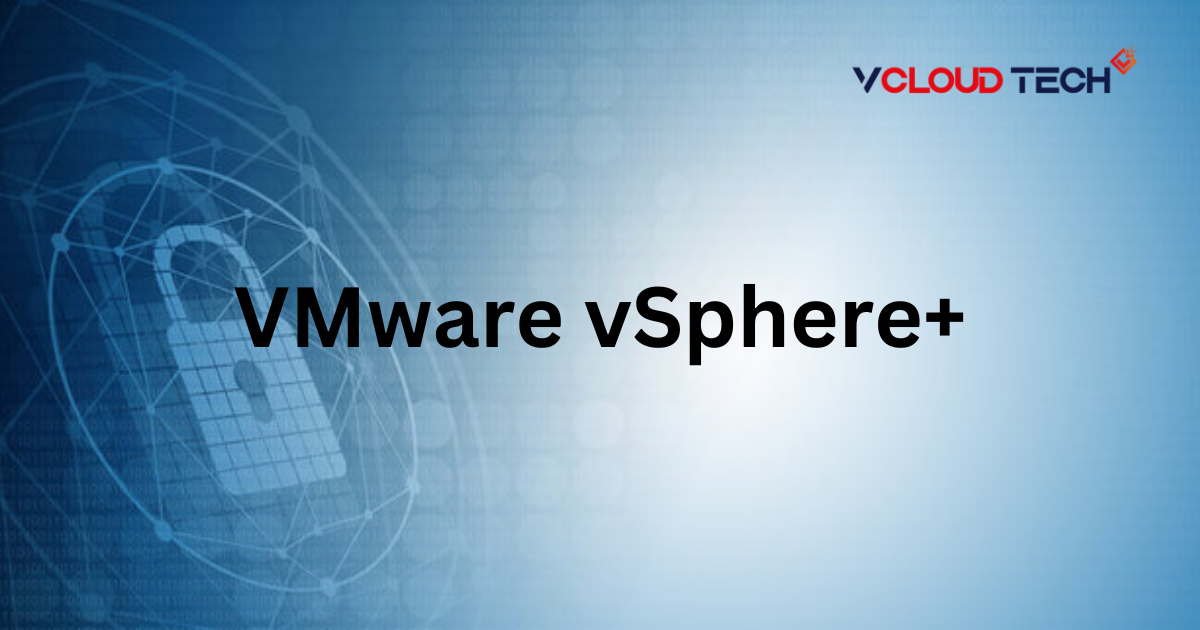In the ever-evolving landscape of IT infrastructure, the concept of server virtualization has emerged as a game-changer. Businesses constantly seek ways to optimize resource utilization, enhance scalability, and reduce operational costs. Server virtualization, particularly through powerful platforms like VMware vSphere+, has become a cornerstone in achieving these goals. In this blog, we’ll delve into the world of server virtualization, explore the nuances of virtual servers, and shed light on why VMware vSphere+ stands out in this competitive arena.
Understanding Server Virtualization:
Server Virtualization is a revolutionary technology that allows multiple virtual servers to run on a single physical server. This enables organizations to make the most efficient use of their hardware resources by consolidating workloads, reducing the number of physical servers required, and improving overall resource utilization.
Benefits of Server Virtualization:
Cost Efficiency:
Server virtualization helps businesses optimize their IT spending by reducing the number of physical servers needed. Organizations can achieve significant cost savings on hardware, power, and cooling expenses by consolidating workloads.
Resource Utilization:
Virtualization ensures that physical server resources are used to their full potential. Instead of dedicating one server to a single application, virtualization allows multiple virtual servers to share the same physical resources, leading to better utilization and improved efficiency.
Scalability:
Virtualization provides a flexible and scalable infrastructure. It allows organizations to scale their IT environment up or down based on changing workloads and business requirements. This flexibility is crucial in today’s dynamic business landscape.
Enhanced Disaster Recovery:
Virtualization facilitates the creation of snapshots and backups of virtual machines, making disaster recovery faster and more efficient. In a hardware failure, virtual servers can be quickly migrated to another host, minimizing downtime.
Virtual Servers: The Heart of Server Virtualization:
At the core of server virtualization are virtual servers – software-defined instances that operate independently on a physical server. These virtual servers, also known as virtual machines (VMs), encapsulate an entire operating system, applications, and associated files. They offer the flexibility to run multiple operating systems and applications on a single physical server, promoting a more agile and dynamic IT environment.
VMware vSphere+: Elevating Server Virtualization to New Heights:
VMware vSphere+ stands out as a comprehensive and powerful solution for server virtualization. Let’s explore some key features that set vSphere+ apart:
Hypervisor Technology:
VMware vSphere+ employs a robust hypervisor, a thin layer of software that sits between the hardware and the operating systems. This hypervisor enables creating and managing multiple virtual machines on a single physical server. VMware’s hypervisor is known for its efficiency, security, and performance.
Resource Management:
vSphere+ includes advanced resource management features that ensure optimal allocation of resources to virtual machines. This includes dynamic CPU, memory, and storage resource allocation based on workload demands, leading to enhanced performance and responsiveness.
High Availability:
One of the critical aspects of vSphere+ is its high availability capabilities. In a hardware failure, vSphere+ can automatically migrate virtual machines to healthy hosts, minimizing downtime and ensuring continuous operations.
Security and Isolation:
Security is paramount in virtualized environments. vSphere+ provides robust security features such as virtual machine encryption, secure boot, and enhanced network security, ensuring the isolation and protection of virtualized workloads.
Unified Management Interface:
Managing a virtualized environment can be complex, but vSphere+ simplifies this task with a unified management interface. This centralized dashboard allows administrators to monitor and manage virtual machines, hosts, and storage from a single control point.
VMware vSphere vs. vSphere+: Unraveling the Plus Factor
While VMware vSphere is already a well-established virtualization platform, vSphere+ introduces additional features and capabilities that take virtualization to the next level. The “Plus” factor signifies an enhanced set of tools and functionalities designed to meet the evolving needs of modern businesses.
Advanced Networking Features:
vSphere+ includes advanced networking features such as distributed switch technology, allowing for more flexible and efficient network management across virtualized environments. This is particularly beneficial for organizations with complex networking requirements.
Improved Storage Management:
Storage is a critical component of any virtualized infrastructure. vSphere+ offers enhanced storage management capabilities, including support for advanced storage protocols, increased storage performance, and improved integration with storage solutions from leading vendors.
Automation and Orchestration:
vSphere+ includes advanced automation and orchestration tools that enable organizations to streamline repetitive tasks, improve efficiency, and achieve higher operational automation. This is particularly advantageous in large-scale virtualized environments.
Conclusion:
In the fast-paced world of IT, server virtualization has emerged as a transformative technology, offering unprecedented flexibility, efficiency, and scalability. VMware vSphere+ stands at the forefront of this revolution, providing a robust platform with advanced features that cater to the diverse needs of modern businesses. As organizations continue to embrace virtualization to stay competitive and agile, vSphere+ remains a key player in shaping the future of IT infrastructure. Whether it’s optimizing resource utilization, ensuring high availability, or enhancing security, vSphere+ delivers the “plus factor” that sets it apart in server virtualization.

